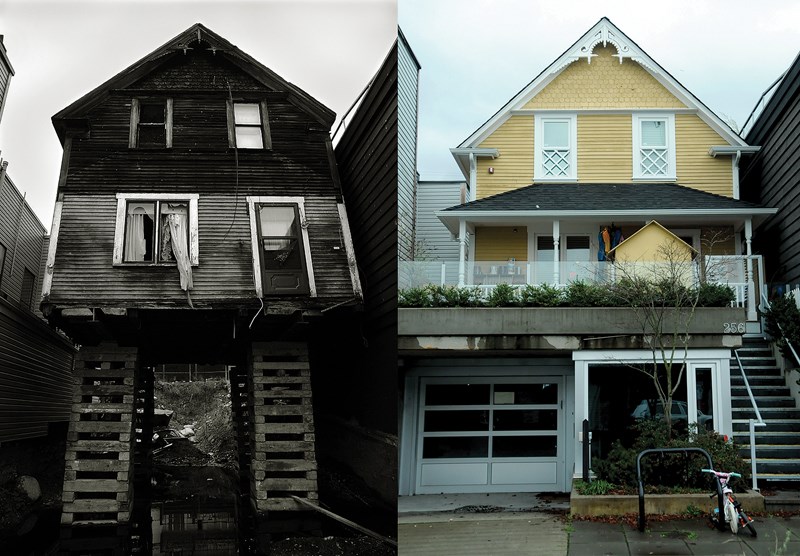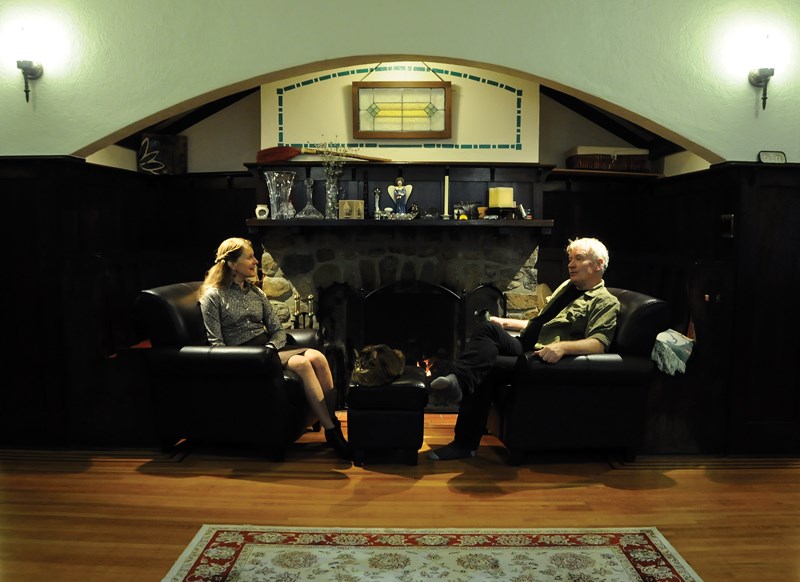“I am not an ordinary house. I am a home with tradition and history. I have sheltered families for over eighty years and in that course of time, only seven families have lived under my roof. … Happy spirits haunt (my) rafters. All the families who have lived here have had happy lives in (my) walls.”
Those were some of the words that greeted Warren and Elizabeth Ash, as they leafed through a booklet that came with their home at 618 East Ninth St. Since it was built by the Macaulay family in 1910, the Edwardian Tudor style home’s history has been documented and updated for the benefit of each new owner. The practice seems to have come to an end in the early 1980s and the house itself fell into disrepair.
The Ashes were living in an apartment in Central Lonsdale when they first came upon it five years ago. It was being marketed as a teardown but they decided almost on a whim that they would restore it to its former glory.
“I literally opened the North Shore News, looked at a couple ads and went ‘Oh, there it is.’ It was this place. We came straight over,” Warren said. “The stone foundation wasn’t seismically sound. The electrical system wasn’t up to (code). The whole place was extremely beat up. The floors had massive stains. They figured it just wasn’t worth it. ... The roof was just like paper, it was so bad.”
But Warren owns his own construction company and, as he sized the place up, they knew it was doable, if a bit tricky.
“I knew there was going to be years of dust, dirt and renovation but it was worth it because this home had so much character. Even when it was empty, it was like, ‘Oh my God, how could anybody think of bulldozing it.’ We love this place. It’s a feeling,” Elizabeth said.
Warren and Elizabeth Ash aren’t the norm. They’re the best case scenario when it comes to saving the old homes – people with the know-how and the cash flow to do it for the love of heritage alone.
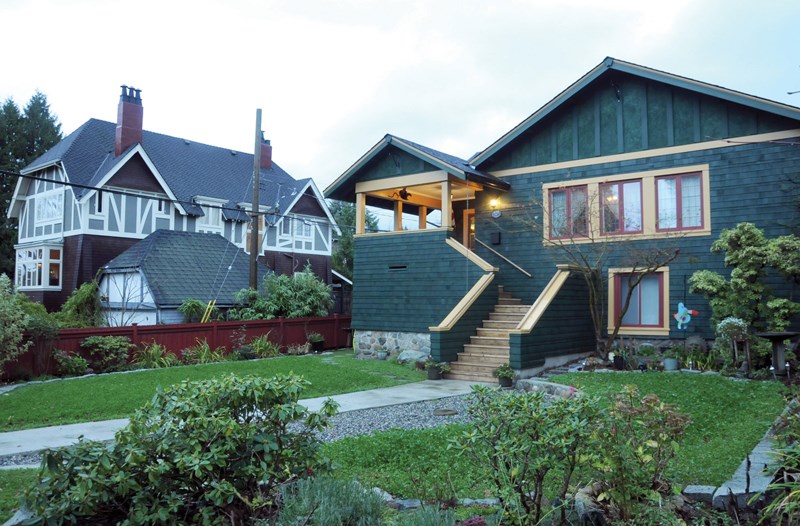
In most cases, developers are eager to snap up the properties, which tend to have larger lots, bulldoze the home and build something larger. Much larger.
The loss of neighbourhood character to stucco-clad monster homes built to the maximum allowable setback is motivating heritage preservationists to lobby the homes’ owners and our local councils to get plans in place that will help keep some of the old-timers around for another 100 years.
“They’re in jeopardy. There isn’t enough administrative protection for them,” said Peter Miller, North Shore Heritage Preservation Society president. “Vancouver’s got thousands of recognized character houses and we have a mere pittance.”
North Shore Heritage has identified about 700 homes in North Vancouver and West Vancouver that have some heritage value worth protecting for a variety of reasons. It could be tied to a particular period style or craftsmanship, a former owner who played a prominent role in the community or a former use of the home, or in the case of more recently built ones, ties to important local architects like the West Coast Modern homes by Arthur Erickson and Fred Hollingsworth.
“Mainly, it’s a very subjective thing. People know it when they see it. They walk along the street and they stop and look at this charming building. It’s not necessarily on the heritage register. It doesn’t necessarily have any specific quality to the community except for its charm,” Miller said.
Our three local councils have shown varying degrees of enthusiasm for heritage. Typically, for a home to be saved through a heritage revitalization agreement, it involves the municipality granting some extra density to the owner, to allow for a second home on the lot.
“These are pretty good incentives and smart developers are taking advantage of them,” said Jennifer Clay, North Shore Heritage vice-president.
It’s a delicate balance drafting a proposal that will make financial sense for the developer, and win the good graces of council and the community.
“Some of them are pushing the envelope a little bit too much. We’ve got a few applications right now where they’re trying to put way too much density,” she said.
Two of the most recent revitalization agreements to come before councils went down to defeat. On Monday night, City of North Vancouver council shot down a proposal that would have saved the Haswell Residence at 910 Grand Blvd., largely because of the density that the developer was asking for. Among residents who signed the petition against it were next-door neighbours Warren and Elizabeth Ash.
In the case of the 1913 Thomson house, at 360 East Windsor Rd., the neighbours came out en masse to decry anything that would subdivide the 100-foot lot, which they regarded as having more heritage value than the home sitting on it. The demolition permit for the Craftsman style home has since been issued.
Those losses could have been avoided, according to Derek Porter, owner of A Carpenter and a Gentleman and one of the go-to specialists in heritage restoration. Porter has seen several heritage revitalization projects through to completion and now teaches a course for would-be developers.
“You always have to work with the public. The last thing you want is to get to a public hearing and have opposition,” he said. “You’re always going to have that NIMBYism, but if you can sell them your vision … and you build your reputation and a sense of trust with the community, you shouldn’t really have any problems.”
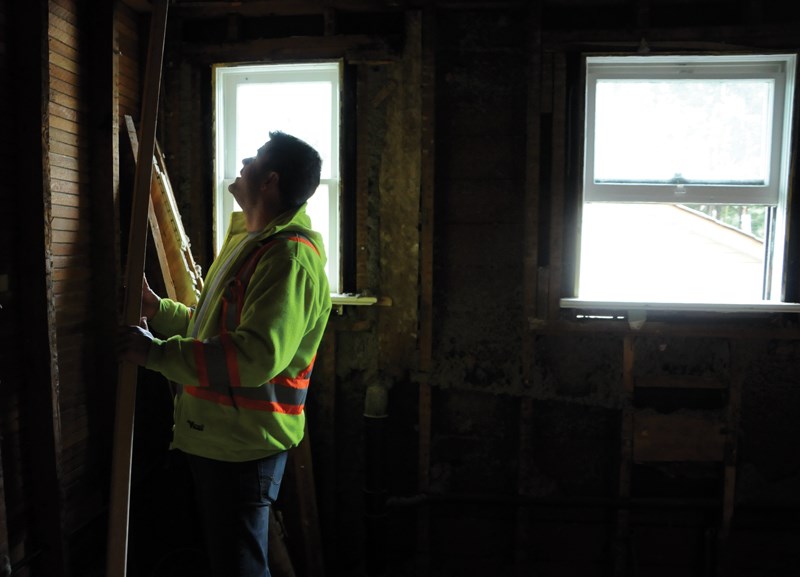
Part of the reason the HRAs fail at council is because councils don’t have an overall heritage strategy to guide them, Clay argues. Other ideas they’re pushing for at council tables and with the province are fast-tracking development applications for heritage homes, more flexibility with building code enforcement, easier stratification of properties and a more active approach of reaching out to heritage homeowners to make sure they know what options are on the table and how to navigate the process.
And sometimes, councils need to know when opposition to a heritage project is being overblown, Miller and Clay agreed.
“It’s fear. They get really, really upset … that their property values are going to go down. It’s unwarranted often,” Miller said.
“There are always going to be the naysayers. I think that’s where councils need to take a stand,” Clay added.
Even the current contraction of the real estate market isn’t likely to stay the developers’ bulldozers, Clay said.
“I don’t think it’s going to make that much difference. Every Realtor I’ve talked to said it’s going to go right back up in January,” she said.
It would also help if councils were visibly supportive of heritage for heritage’s sake, Clay added.
At a West Vancouver council meeting in May, Mayor Michael Smith voted in favour of an HRA to save the 1913 Vinson House at 1425 Gordon Ave. in exchange for adding more units to the lot, but not before bluntly pointing out that “98 per cent of the residents of West Vancouver will never see it, will never hear of it and really don’t care about it.”
That harsh perception is something that North Shore Heritage is trying to combat. Miller argues heritage is like other forms of art that society venerates, even if only a handful of people actively engage with it.
“If you’re a member of the Vancouver Symphony Orchestra, you get the same kind of philistine comments. Ninety eight per cent of the public aren’t interested in classical music. ... That’s not the point. We’ve got a character home in our community, which is of value, which is of merit, and the fact that 98 per cent of the people don’t get it is not a reason to sweep it aside,” he said.
Replica replacements for far-gone heritage homes aren’t a solution either, Miller asserts, saying it amounts to “Disneyfication.”
“We have the same discussion when it comes to famous paintings. The Mona Lisa – everybody comes and stands in front of it because of the fact that this was the painting that the painter painted,” he said. “(A replica) loses that vital emotional, intangible connection with the artist.”
And the craftsmanship and materials would simply never be the same. Old, single-pane windows perhaps don’t do much to ward off the cold, but, over time, the lead glass warps slightly, giving it a wavy look – a signature of authenticity that big box supplied windows cannot emulate.
Porter started out with the granddaddy of North Vancouver heritage homes: Hamersley House, a 10,000-square-foot Tudor Revival mansion on a 28,000-square foot lot at 350 East Second St. It was completed in 1911 by Alfred St. George Hamersley, the City of Vancouver’s first solicitor, who used to row his way across Burrard Inlet to commute to work. He stayed only a short time and sold it to a nunnery, which converted it to a hospital. Later, it was a seniors’ home and, finally, a restaurant owned by the city.
Developers would have been salivating for the lot but the city issued a request for proposal in hopes of finding someone who would take it on, restore it and keep it protected. Negotiations took almost two years, but in 2000, Porter got it for a song and set to work stripping away all the modifications that had sullied its heritage value, like concrete poured over the original wooden wraparound deck and black spray paint covering the original windows.
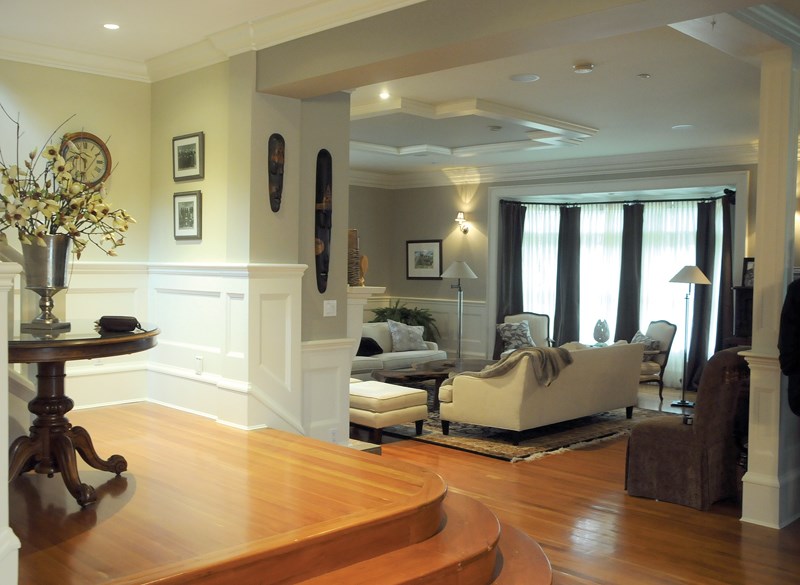
People have come to the front door to tell him they were born there. Others have told him they had relatives who died there.
“Then I got into it. Then I sat on the heritage commission for eight years. Then I became a believer. I bought in. I think lots of people, when they become exposed to it, would buy in. It’s the right thing to do,” he said.
Several of his projects have since won heritage restoration awards. One of his current projects is a 1912 home at 346 East Fifth St. It too was saved through an HRA when the previous owner bargained with the city to build a new laneway home.
Next door, a young man working a chop saw buzzes through some materials for a nearly complete new home. From a contractor’s perspective, it’s a much easier project but still, Porter cringes a bit at the thought.
“It’s not the sustainable approach. If you rip this down, put it in a box, put it in a landfill and then you harvest new product to build a new one, it’s not really the right attitude. We want to reuse what’s here. There’s lots of good value here,” he said.
It’s painfully ironic, he’ll admit, but Warren does a lot of work deconstructing heritage homes in Vancouver’s Shaughnessy neighbourhood, and rebuilding new ones. Vancouver’s loss has been his gain as it’s given him a line on heritage-age materials that otherwise were destined for the landfill. Part of his floor came from the former French consulate in Vancouver.
Warren has some advice for any couples dreaming of heritage, lest the happy streak the Macaulays started comes to an end. Restoring a home shouldn’t result in broken home, he noted.
“It’s important, if you’re going to be living in a renovation, that you get along,” he said. “Living in a renovation can be very stressful for people. I know this from experience. People will often get divorced when they’ve finished.”
